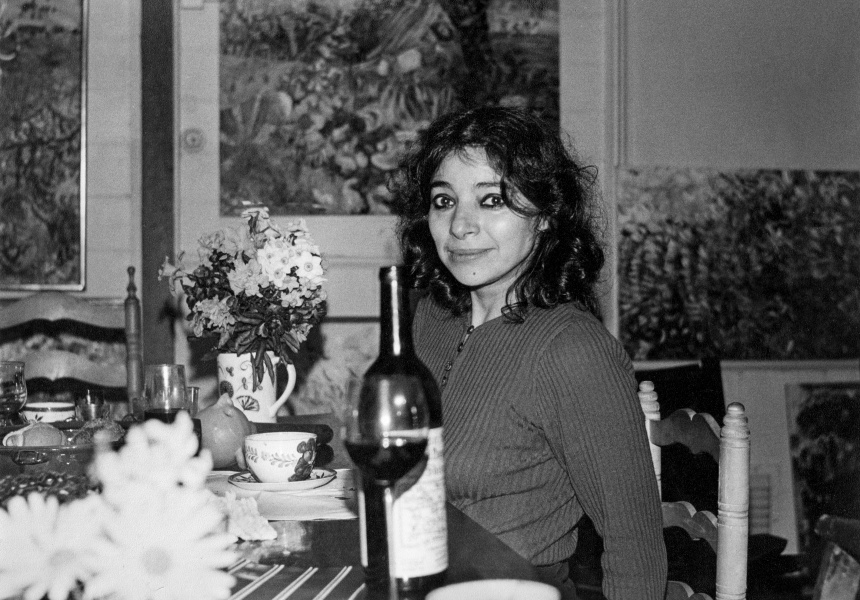I still remember my “Mirka Mora moment”. It was at an exhibition in South Melbourne in the early noughties, and she gave the opening address. I have no memory of the art that was on display – all I remember from that night is Mirka. Her insatiable cheekiness, the warmth that just seemed to ooze from her. Her speech was as Mirka as it gets – spontaneous and off-topic, refreshingly rude, but above all, heartwarming.
The drafter, painter, sculptor and mosaic-maker passed away in 2018 at 90 years old. By that time her dream-like depictions of wide-eyed children, angels, birds and other animals had become iconic. She’s one of just a few Australian artists whose art practice is as respected on the established gallery circuit as it is on the street – from her painting of the very first Melbourne Art Tram in 1978 to her collaborations with local fashion label Gorman in 2016 and 2018.
And this February, after a Covid-related delay, the Jewish Museum of Australia will host the largest survey of the artist’s life and work to date.
Never miss a Melbourne moment. Make sure you're subscribed to our newsletter today.
SUBSCRIBE NOWThe exhibition will be a “revelatory exploration” of Mirka’s life and art, and the museum will be transformed into an immersive “Mirka world”, says museum director Jessica Bram. The museum is collaborating closely with Mirka’s gallerist son, William Mora, on the project. “We want the exhibition to be a tribute to Mirka in her fullness.”
The exhibition will showcase never-exhibited works from the Mora family’s private collections and Mirka’s studio and archives. Rather than just presenting the works of art – as many of the exhibitions held during Mirka’s lifetime did – this show will connect the artist’s complex life experiences with her creative output. Her voice will be present in numerous forms – letters, sketchbooks, diaries, video interviews and more. During lockdown, the museum commissioned audio artists Madeleine Flynn and Tim Humphrey to create a soundscape that – using Mirka’s own voice – will guide visitors through the space.
And Bram says to expect a few surprises, too. “How do you take a larger-than-life personality and translate it into the exhibition form? We have grand plans for colour, boldness, her signature aesthetic … [and bringing elements] to the exhibition and to our visitors that are not necessarily expected,” she says.
Born in Paris in 1928 to a Lithuanian Jewish father and a Romanian Jewish mother, Mirka was sent to a concentration camp at Pithiviers (south of Paris) in 1942, when she was 14. She was scheduled to be deported to Auschwitz, but, through the ingenuity of her parents, was miraculously released. She spent the remaining three years of World War II hiding in small villages and forests in France with her family.
After the war Mirka met and married Georges Mora, another Jewish refugee, and together they emigrated to Melbourne. The pair became key figures in the city’s bohemian subculture during the ’50s and ’60s.
Not only did Georges establish what is now one of the longest-running commercial galleries in the country – Tolarno Galleries – but together he and Mirka ran some of city’s most vibrant cafes and restaurants. Mirka Café, Balzac and Tolarno French Bistro became gathering spots not just for Melbourne’s most progressive artists, intellectuals and writers (John and Sunday Reed, Charles Blackman, Joy Hester, Arthur Boyd and Barry Humphries included), but visiting celebrities such as Mick Jagger, Bob Dylan and Marlene Dietrich too. (Balzac was the first spot in the city to secure a 10pm liquor license.)
These days, the importance of food and art to culture is something we take for granted; back then, it was part of a subculture that Mirka and her circle helped create and energise. The show at the Jewish Museum will take you inside that world – and inside Mirka’s head – in a way that earlier exhibitions haven’t.
The exhibition also promises to give us a taste of a “new era” for the Jewish Museum, Bram adds. “We are repositioning ourselves in a different, fresher, more contemporary way, but that is still very much tied to the legacy of the organisation.”
It’s “a shift and evolution in the way we’re presenting exhibitions … A transformed visitor experience”.
For Mirka, the museum is working with exhibition and concept designer Anna Tregloan, for example. Tregloan has a theatre background, regularly collaborates on installation design with ACMI, and “brings an extraordinary ability to translate exhibition concept into an immersive experience,” Bram says.
Mirka opens at The Jewish Museum of Australia on February 14.
Alana Kushnir is the founder of Guest Work Agency, a curatorial practice and legal and advisory firm for artists, collectors, galleries and other arts organisations.
This article was updated on January 28.



